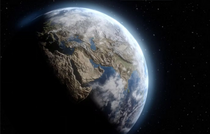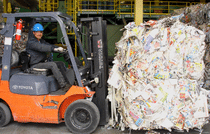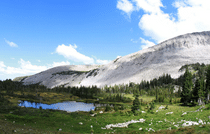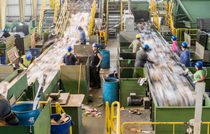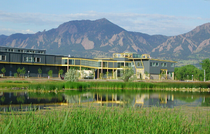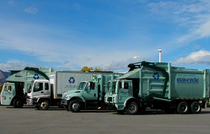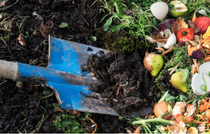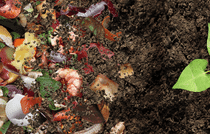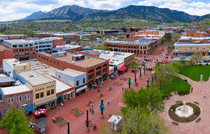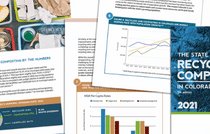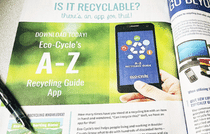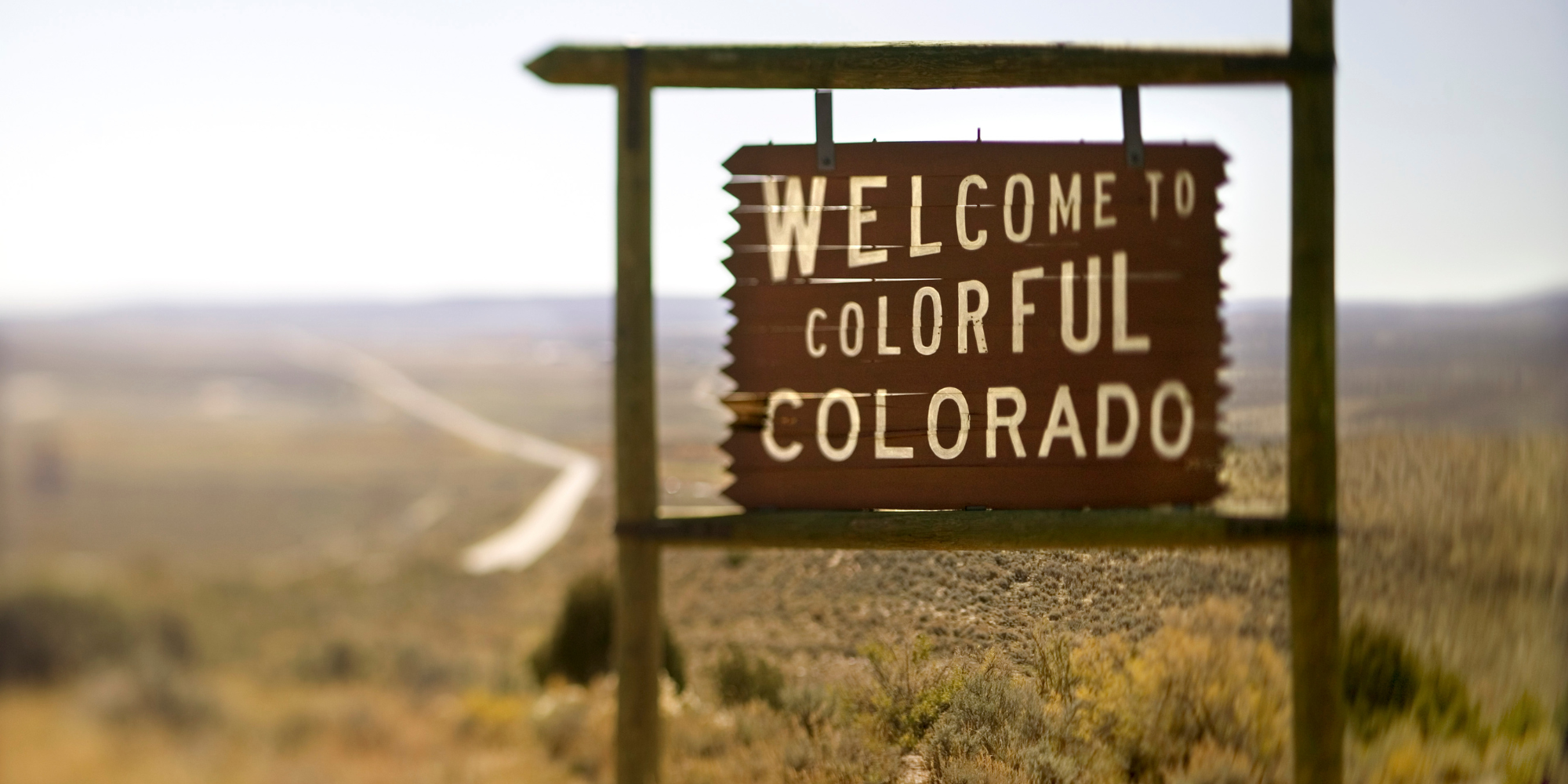Zero Waste on the Road: My Travels in Mexico
From snowy Buffalo to sun-soaked Mexico, Thea Hassan—Eco-Cycle contributor and AMBR Communications Manager—spent two months exploring how to travel with a lighter footprint. In this blog, she shares her low-waste travel tips, the unexpected challenges she faced, and eye-opening observations about waste and sustainability in Mexico.
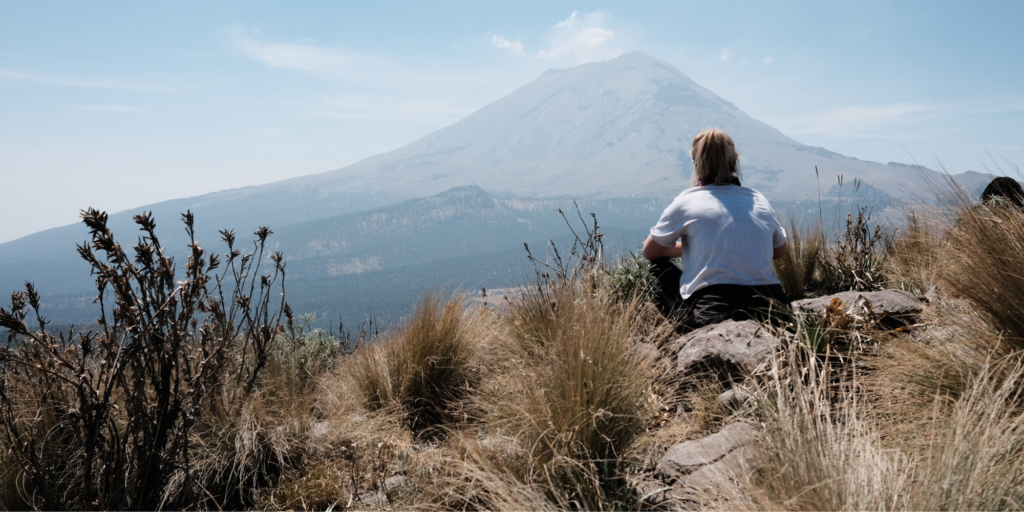
What does Zero Waste travel really look like in practice? From what you pack to how you move through the world, here’s how I (Thea Hassan, Eco-Cycle contributor and Communications Manager for the Alliance for Mission-Based Recycling) approached it on my two-month trip through Mexico.
Pack for Zero Waste
First things first, I pack to use less. My reusables—a stainless steel coffee mug, water bottle, and durable cutlery—are always easily accessible in my carry-on bag. Pro tip: TSA confiscates anything they consider “knife-like,” so leave your reusable knife at home to avoid bag searches, delays, and having your stuff thrown away (Denver airport, you owe me a knork!).
To get around liquid restrictions, I pack bar soaps for my face and body (bonus: they won’t explode in your bag). For longer trips, like my two-month Mexico stay, I waited until I arrived to buy larger items like shampoo, conditioner, and sunscreen. It’s a great way to experiment with local products!
To avoid overpriced, plastic-wrapped airport snacks, I pack healthy, uncrushable snacks like apples, carrots, nuts, and crackers. Once I land, I continue carrying my reusables and snacks in my day bag to avoid on-the-go purchases.
Learn Culture Through Infrastructure
One of my favorite things about travel is learning how things work in other places, and local infrastructure reveals so much about a place’s values as well as challenges.
In Mexico City, you’ll likely hear a rhythmic voice echoing through neighborhoods, chanting: “ColCHONES . . . estUfas . . . tambORes . . . refrigeradORes . . .” That’s a scrap collector, calling for old mattresses, stoves, and other home appliances. The call eventually blends into the sounds of the city, alongside barking dogs and bird calls.
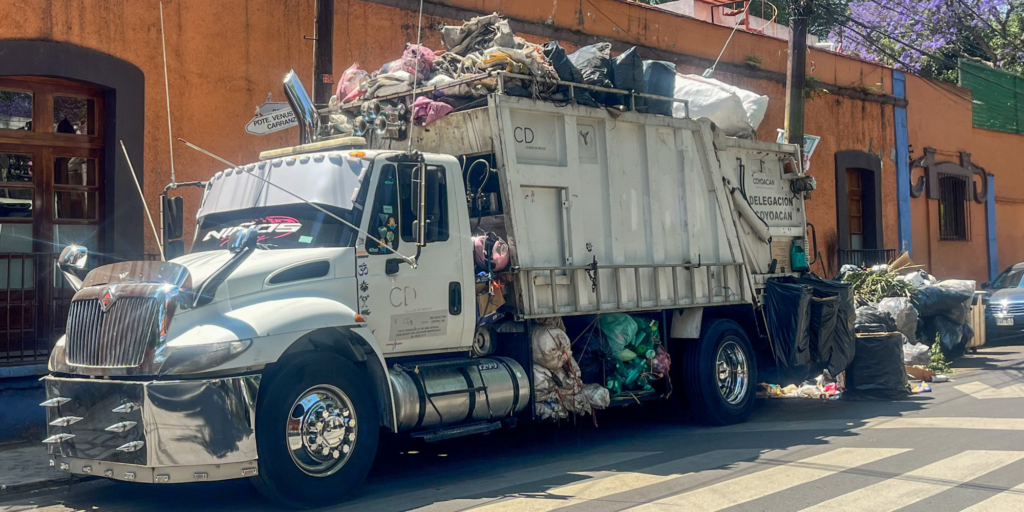
Here’s what else stood out:
- Reusables are common. Like so many places outside the US, convenience-driven, “to-go” culture is much less common. People sit at cafés and enjoy their coffee in real cups and guava rolls served on real plates.
- Even street stands use durables. Mexico City’s famous street stands offer reusable plates. You eat your tlacoyo or quesadilla at the stand and then return the plate—no to-go waste!
- Separating materials for recycling. In Mexico City, some separate their materials into four categories: PET plastics, aluminum, organic waste, and all other waste. I saw this type of separation in many places, even in a remote mountain town in Oaxaca.
- No curbside bins. Instead of door-to-door pickup, neighborhoods have trash collection spots. When the trash truck arrives, it gives a call, and folks bring their garbage over. You’ll see lots of bags hanging from the side of the truck as workers sort valuable materials from the trash. Many trash trucks were decorated with salvaged treasures, like lights, stuffed animals, and other colorful and chaotic decor.
- Unnecessary plastic was still prevalent. Because the water is non-potable, I went through a ton of plastic water bottles. I did buy a large 5-gallon jug to refill my water bottle, but even one person drinks a lot of water in the hot Mexican climate. I was also frequently offered plastic bags at the checkout line, but a simple “No bolsa, por favor” did the trick.
- Water scarcity is a serious issue—especially in the city, where water is running low and shortages are common. You’ll see reduction strategies like collecting greywater from showers to wash patios and signs encouraging tourists not to waste water.
Rethink “Single-Use” Transportation
When we talk about Zero Waste, we usually think of reducing packaging—but transportation habits matter, too. While traveling, we’re often tempted to prioritize efficiency over sustainability, and single-occupancy trips in taxis and ride-shares have a huge impact on the environment and the quality of life for locals.
As much as possible, I opt for public transit. In many places outside the US, public transportation not only saves money, but also offers a much more authentic experience—you see how locals live and move instead of getting the tourist’s drive-by view.
In Mexico City, I took the buses and metro every day. Some tourists expressed safety concerns, but I never felt unsafe. There’s a strong police presence, and the metro even has designated cars in the front for women and children under 12. I occasionally rode in the general cars during the crowded peak transit times, but usually preferred the relaxed women’s section, where people were reading and putting on makeup.
I used ride-shares or taxis only when necessary—for example, in the early-morning hours after wandering through historic sites like Templo Mayor and the Zócalo.
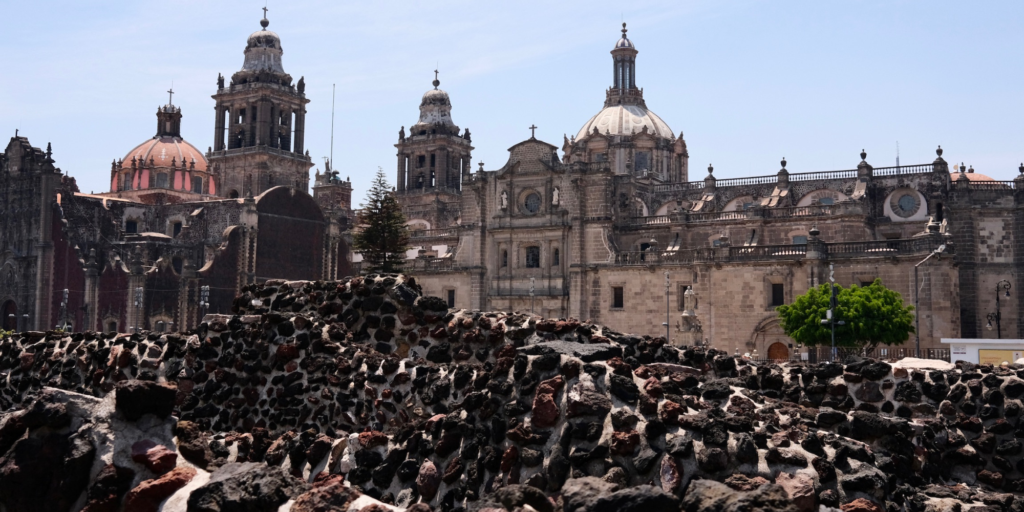
Better yet, if you are comfortable, ride a bike! I hop on a bike-share in every city I visit—an unforgettable way to learn a city. In Mexico City, every Sunday, about 30 miles of streets are closed to motorized vehicles and opened to bikes and other human-powered travel. Be observant and use caution, as traffic norms vary from place to place.
Buy Less, Remember More
My trip covered many climates as I crossed from Buffalo to Boulder and then to Mexico (where I traveled in cities, mountains, and the seaside), so I had extremely limited space for souvenirs. When I buy things for friends and family, I try to get stuff I know they’ll use, like artisanal soap, weird-flavored toothpaste, unusual sweets, or coffee. I did pick up a couple of books (including a Spanish graphic novel of Albert Camus’s The Stranger) and some handmade art from Oaxaca, but I mostly let my memories be my souvenirs.
I made it back home to upstate New York with slightly improved Spanish, a deep appreciation for Mexican culture, and an obsession to learn more about pre-Hispanic history (did you know there were actually no people who called themselves Aztecs?!). With a little planning, travel can be both inspiring and lower-impact. The journey is the reward—but doing it thoughtfully makes it even richer.



